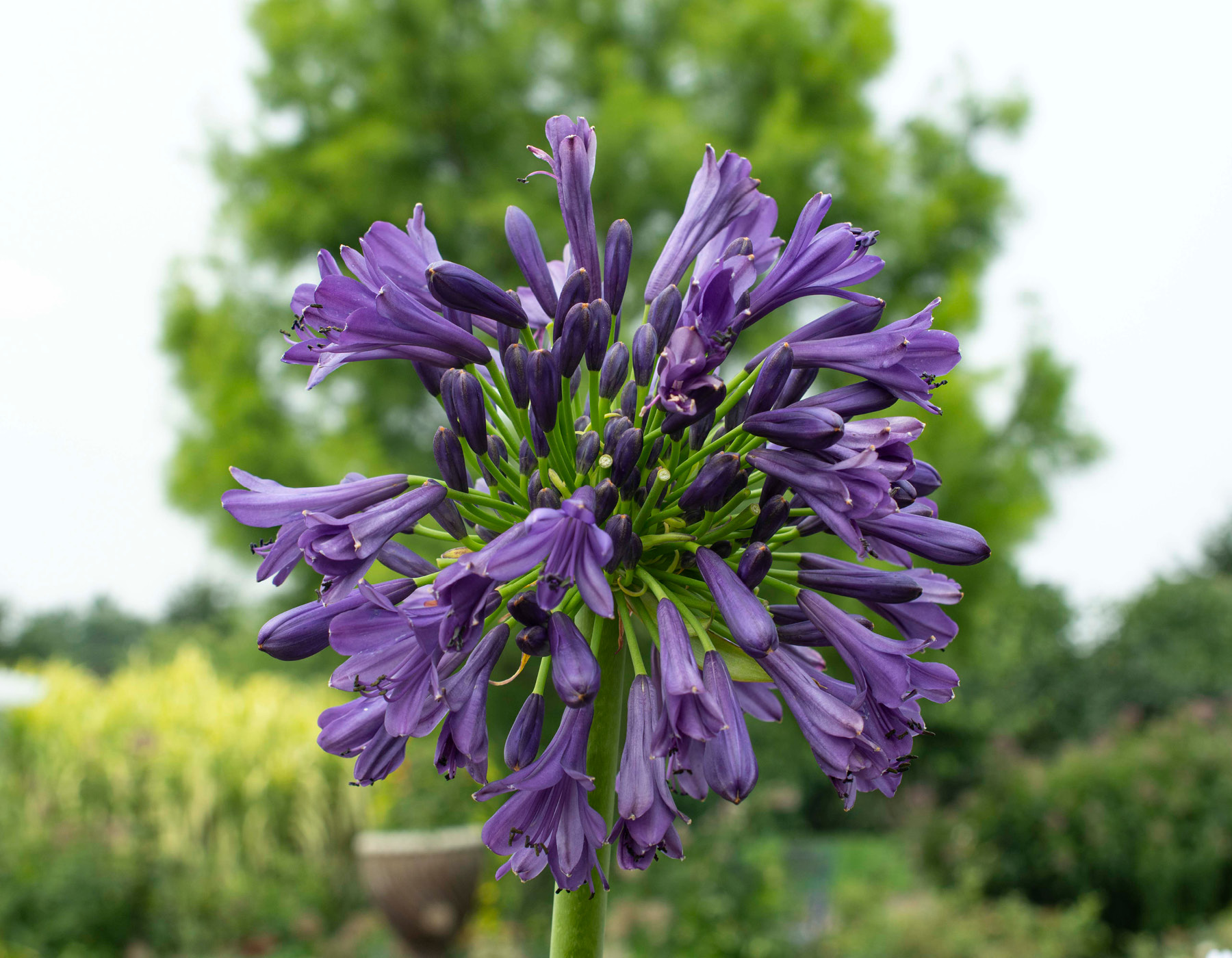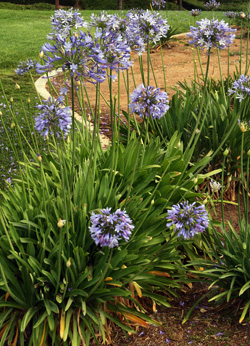Grasping the Art of Agapanthus Care: Necessary Steps for Healthy And Balanced Development and Lively Blooms
In the realm of gardening, the cultivation of agapanthus stands as a rewarding endeavor for those who seek to nurture these elegant blooming plants. From selecting the ideal variety to understanding trimming techniques, the trip in the direction of cultivating prospering agapanthus plants is multifaceted and holds the crucial to unlocking the full possibility of these herb treasures.

Choosing the Right Agapanthus Variety

When choosing the ideal Agapanthus range for your garden, take into consideration variables such as climate suitability, blossom shade, and growth habit. Agapanthus, generally called Lily of the Nile or African lily, comes in a selection of shades varying from shades of purple and blue to white. Pick a blossom color that complements your existing yard combination to create an unified landscape. In addition, take into consideration the environment in your area to make sure the Agapanthus variety you pick can prosper in your specific problems. Some selections are more tolerant of cold temperature levels, while others favor warmer climates. Comprehending the growth habit of various Agapanthus ranges is critical for proper positioning within your garden. Some ranges have a clumping growth routine, perfect for containers or borders, while others have a more spreading nature, appropriate for ground cover or mass plantings. By very carefully examining these aspects, you can pick the excellent Agapanthus selection to boost the appeal of your yard.
Ideal Growing Problems
Thinking about the optimum ecological demands is essential for effective Agapanthus farming. Agapanthus flourishes in well-draining dirt with a slightly acidic to neutral pH level. When growing, choose a place that obtains complete sunlight to partial color. In hotter climates, offering some mid-day shade can avoid scorching of the leaves. Agapanthus plants are delicate to cold temperatures and need to be secured from frost during cold weather.
To ensure healthy development and lively blossoms, plant Agapanthus light bulbs at a deepness of about 2-4 inches and room them 8-12 inches apart. Mulching around the base of the plants helps retain moisture and reduces weed development.
Watering and Feeding Tips
Preserving appropriate moisture degrees and supplying important nutrients are key components in the treatment regimen for Agapanthus plants. When it comes to sprinkling Agapanthus, it is vital to strike a balance. These plants prefer continually damp soil but are vulnerable to root rot if overwatered.
Feeding Agapanthus is important for advertising healthy and balanced growth and respected flowers. Apply a balanced plant food, such as a 10-10-10 formula, in the very early spring as brand-new development arises. By following these watering and fertilizing suggestions, you can guarantee your Agapanthus plants grow and produce dynamic, resilient blossoms.
Trimming Techniques for Agapanthus
Trimming Agapanthus plants at the ideal times and with proper methods is vital for keeping their health and promoting optimal growth and blooming. The perfect time to trim Agapanthus remains in late winter months or very early springtime prior to brand-new development arises. Beginning by removing any dead or yellowing fallen leaves near the base of the plant. Cut them as short as feasible without harming the arising shoots.
Deadheading invested blossoms can likewise redirect the plant's power right into creating even more blossoms rather than establishing seeds. If you desire to gather seeds for proliferation, leave some flowers to fully grown and completely dry on the plant.
Remember to make use of tidy, sharp tools to make precise cuts and lower the danger of presenting conditions. Agapanthus. Regular pruning will certainly aid maintain your Agapanthus looking healthy and cool while making certain an abundant display of gorgeous blossoms
Taking Care Of Usual Bugs and Conditions
After ensuring correct pruning techniques for Agapanthus, it is vital to attend to usual parasites check my source and illness that can affect the wellness and vitality of these plants. One typical parasite that impacts Agapanthus is the Agapanthus gall midge.
In addition, Agapanthus plants can experience from root rot if her latest blog they are planted in improperly draining pipes soil. By being vigilant and taking prompt activity against diseases and insects, you can assist your Agapanthus plants flourish and generate lively flowers. Agapanthus.

Conclusion
In final thought, mastering the art of agapanthus care involves picking the right range, providing perfect growing conditions, proper watering and feeding, proper trimming methods, and addressing usual bugs and illness. By adhering to these crucial actions, you can make sure healthy and balanced development and vivid blooms for your agapanthus plants. Remember to frequently monitor and preserve your plants to promote their general wellness and long life.
To make sure healthy and balanced growth and lively blooms, plant Agapanthus bulbs at a deepness of regarding 2-4 inches and room them 8-12 inches apart. By following these watering and fertilizing suggestions, you can guarantee your Agapanthus plants flourish and create dynamic, durable flowers.
One usual insect that affects Agapanthus is the Agapanthus gall midget. In addition, Agapanthus plants can endure from root rot if they are grown in inadequately draining pipes soil. By complying with these vital actions, you can make certain healthy you can look here and balanced development and vivid blossoms for your agapanthus plants.